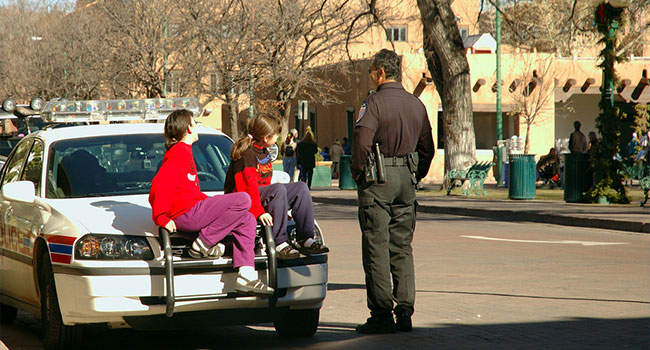
New Mexico Bill Would Require School Resource Officers To Receive De-escalation Training
The legislation comes as a response to an incident involving a sheriff’s deputy tasing a special education student last year.
- By Haley Samsel
- February 05, 2020
Lawmakers serving on the New Mexico House’s judiciary committee unanimously voted to advance House Bill 184, which would provide funding to train school resource officers in de-escalation techniques and ways to respond to students with mental health issues.
The bill’s sponsor, Democratic Rep. Patricio Ruiloba, a retired police officer, says the funding would help officers learn how to respond to incidents in an educational environment. The state has recently been the site of publicized violent incidents involving school officers and students, according to The Santa Fe New Mexican.
“We’ve had a couple incidents in New Mexico that were really visible in the media that showed the best way not to engage students when they’re in crisis,” Ruiloba told The New Mexican. “It’s a challenge because not only does it cause trauma for the student” and becomes a “huge liability” for the school district and police department, Rulioba added.
One of those incidents took place in May 2019 and involved a sheriff’s deputy tasing a 15-year-old special education student at Española Valley High School.
A body camera video showed former Deputy Jeremy Barnes enter a room where school security staff were questioning the student about a potential drug transaction, eventually leading to a confrontation and Barnes tasing the boy at close range. Barnes tased the boy two more times as another staff member held the boy on the floor.
Barnes is now facing charges of abuse, false imprisonment, aggravated battery and violation of ethical principles of public service, according to The New Mexican. Ruiloba said that the incident has caused officers and school staff to have more “conversations about socio-emotional learning and trauma.”
“Officers now understand the needs in the school community and how to respond in a way that’s more proactive for students,” Ruiloba said.
The funding would come from the state’s Law Enforcement Protection Fund and allocate $1,000 for each full-time, certified police officer or sheriff’s deputy working as a resource officer to receive training. Officers would be required to complete the training within a year of being assigned to a campus, according to the newspaper.
About the Author
Haley Samsel is an Associate Content Editor for the Infrastructure Solutions Group at 1105 Media.